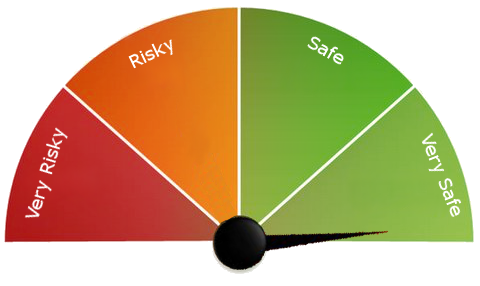Fund Risk Gauge
Post on: 1 Апрель, 2015 No Comment

By SAUL HANSELL
Published: June 20, 1994
The Securities and Exchange Commission is trying to develop a simple yardstick that would help investors assess the risks of mutual funds.
Fund advertisements currently trumpet their past returns in bold type, while tiny footnotes caution, Past performance cannot guarantee future results.
We’re trying to see if we can come up with a snapshot, a letter or a number to convey to investors the risks in a fund, said Barry J. Barbash, the director of the S.E.C.’s investment management division. Seeking One Yardstick
This is a sharp departure in how regulators have dealt with mutual funds, which have been allowed to talk about the past but not to predict the future. Condensing the myriad risks in an investment into a single measure is difficult, if not impossible, and the agency may take six months to a year to develop and test its proposal.
Investors have found the disclaimer about past performance distressingly apt this year as some top-performing government-bond mutual funds suffered sharp drops in price. The worst of dozens of examples is the Piper Jaffray Institutional Government Income Fund, which returned 15 percent annually from 1991 to 1993 but has lost 25 percent so far this year because of a flawed strategy for investing in esoteric bonds backed by home mortgages.
In the last year, even before the recent problems, the S.E.C. has ordered fund managers to write in their letters to shareholders more clear descriptions of their strategies and the risks in them. But the agency is wondering whether some sort of quantitative measure could highlight the risk level for the many investors who do not read these documents.
The biggest gap is that investors don’t know what they are investing in, said J. Carter Beese, an S.E.C. commissioner.
If a single measure is not practical, the agency is likely to require that funds at least describe their risks in text that is easier to read and more to the point than current legal disclosures.
Nonetheless, the agency is considering whether some of the quantitative statistical tools that have been developed by sophisticated investors like pension funds and brokerage firms to measure risk can be simplified for use by individuals. These measures examine the sensitivity of various investments to market changes and the expected volatility of their price movements.
Put simply, these tools could help determine which funds will lose a lot of money in a market decline versus those that will be only mildly affected. (To be sure, risk goes along with return, so less volatile funds should benefit less in rising markets as well.)
There are already several private initiatives, among newsletters and credit rating agencies, that could serve as models for the S.E.C. For example, Morningstar Mutual Funds, a Chicago publishing company, calculates a risk ratio that compares how often a fund loses money relative to similar funds. Thus a fund with a risk rating of 0.50 would have lost money half as often as other funds. This approach works only if the fund’s investment approach remains constant, because it looks at past performance.
Fitch Investors Service, a credit-rating agency, has a more thorough ranking system for bond funds, for example, that requires the manager to submit its current portfolio for analysis every month. Fitch computes the volatility of each security the fund holds and subjects the securities to computerized stress tests of extreme market movement. It then ranks funds on a three-point stability scale: 1 for stable, 2 for variable and 3 for volatile.
Neither this service nor a competitive mutual funds rating service from Standard & Poor’s has proved popular among funds, which must pay for the ratings. And the only funds that choose to have themselves rated are those that qualify as most stable.
The S.E.C. is trying to figure out if it can either encourage funds to get private ratings or — more likely — develop a Government standard for risk ratings. S.E.C. economists are meeting with fund companies, academics and credit-rating agencies to evaluate various measures.
The move to explore a new measure of risk came out of a series of meetings last fall that the S.E.C. held with small groups of investors to ask about their mutual fund investments.
One of the concerns that comes out of virtually every focus group is that investors want some sort of clear statement about risk, Mr. Barbash said. Effort Given a Push

The S.E.C.’s effort was given a push last week when Representative Edward J. Markey, Democrat of Massachusetts and chairman of the House subcommittee that oversees the agency, asked for a report studying ways that investors could be protected from new risks in mutual funds.
Mr. Markey was especially concerned about the new risks from derivatives, complex financial arrangements that funds use as a substitute for buying securities. But financial experts say the same issues are raised by other modern investment tools, like junk bonds, mortgage-backed securities and bonds issued in developing countries. These tools have characteristics that are difficult for individuals to understand. Yet their very complexity makes finding a single risk measure difficult. Some would even say impossible.
Everyone loves the Holy Grail of ‘Gee, wouldn’t it be great if there could be one number that could work for all types of funds,’ said David Jones, a vice president for Fidelity Investments. I don’t think it can. We found you really have to use words.
The mutual fund industry is divided on the S.E.C.’s plan. Some managers would like a measure with which they could reassure their customers, but others worry that any single system could lead to distortions. The Investment Company Institute, the mutual fund trade organization, called a meeting in Washington next week for fund experts to discuss a quantitative risk-rating system. But it is cautious about whether such a plan could work.
You run the risk of putting out information that could be misleading, said Craig S. Tyle, a lawyer for the trade group. For example, he said, fund mangers often change positions significantly, making risk ratings potentially outdated. And some markets remain placid for years only to erupt in violent outbursts of volatility that statistical measures may not be able to predict.
Others worry that some of the techniques that some fund managers use to hide risky investments from their shareholders could be used to manipulate ratings, if they were based on a snapshot of the portfolio holdings.
Many investment experts argue that much of the current disclosure to investors is both difficult to understand and ultimately inadequate. Managers Given Flexibility
Currently, most prospectuses, the documents meant to protect mutual fund consumers, are written to give the fund manager so much flexibility to invest in nearly any market that it is difficult to tell what the fund is actually doing. Moreover, prospectuses are filled with daunting legal disclosures of every potential risk the fund may face without highlighting the most significant risks the fund is taking.
There is no way of knowing the true risk in many bond funds, said John Rekenthaler, editor of Morningstar Mutual Funds. Even the sophisticated investor is not given the information they need to make an informed decision.














